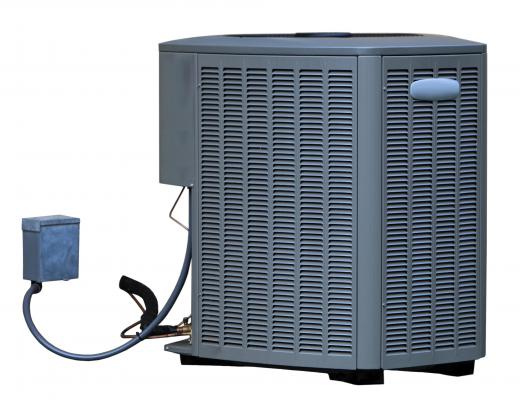Refrigerant lines include any tubing or piping used to transport liquid and gaseous refrigerant through a cooling system. These lines often consist of thin, flexible tubes, though some installers may use lines made from rigid copper or steel. Refrigerant lines transport the refrigerant between the condensing coil and the fan or blower unit, which can be found on air conditioners, heat pumps, and food storage systems.
Each set of refrigerant lines consists of two separate tubes or pipes. The larger of the two, known as the suction or vapor line, transports refrigerant in its gaseous state. The smaller of the two lines, known as the liquid line, carries the refrigerant when its in its liquid state. In addition to its larger diameter, the suction line can also be identified by the presence of insulation, which is not typically used on the liquid line.

Despite their similar appearance, refrigerant lines actually differ from standard water lines in several key ways. Tubes or pipes designed for refrigeration purposes are cleaned and capped prior to sale, which ensures no contaminants enter the system. Water pipes do not undergo the same level of cleaning and capping, and thus cost much less than refrigerant piping on average. While water lines are identified using their inner diameter, refrigerant lines are sized using their outside diameter.
Each set of refrigerant piping may be installed using sheet metal hangers or tape. Some manufacturers also produce special hangers designed to work with these lines. The lines should be placed close together, but should never touch one another, as this could impact system performance.
Installers must consider a number of factors when selecting the correct size and type of refrigerant lines for each system. The length of the run between the condenser and compressor often determines the diameter of the lines. Line sizing can also be influenced by the material used for the lines, as well as the required speed that the refrigerant must be able to maintain within the pipes.
Refrigerant lines that are incorrectly sized can cause significant damage to the cooling system components. Pipes that are too large will reduce the pressure within the system, leading to poor performance. Without the proper level of pressure, the refrigerant will change states at the wrong time, making it incapable of transporting heat energy as intended. Pipes that are too small may lead to excess pressure, which could flood the cooling system.
